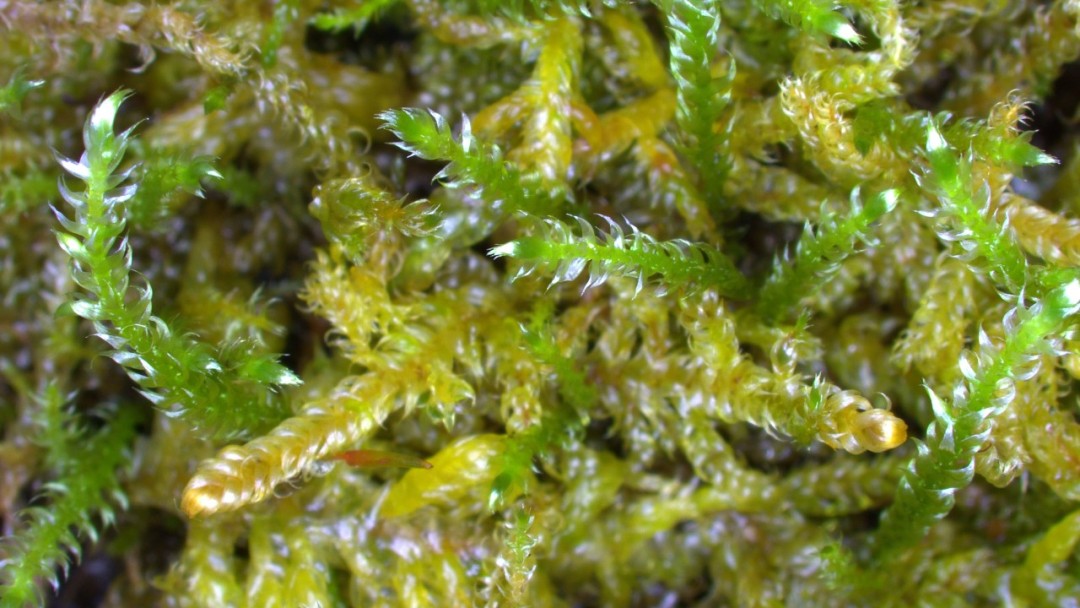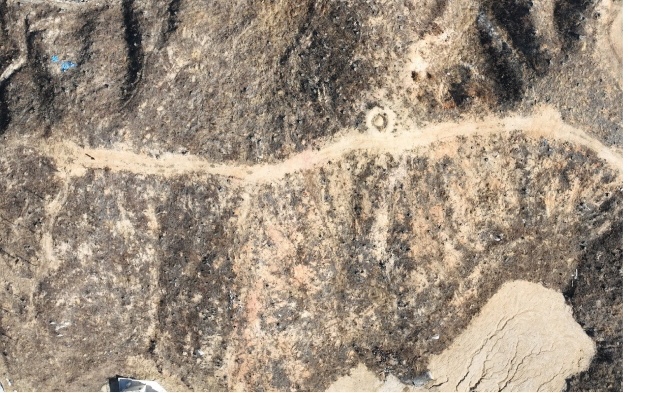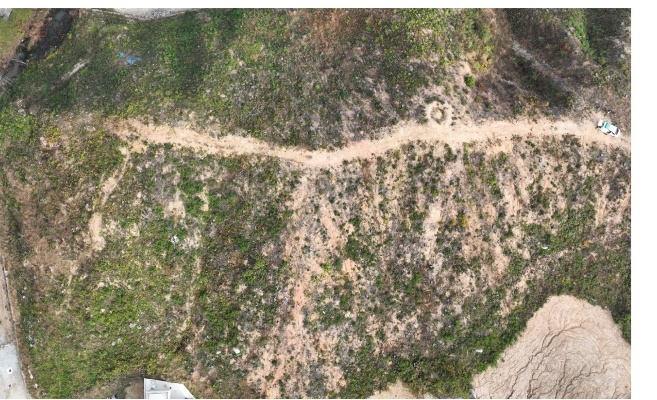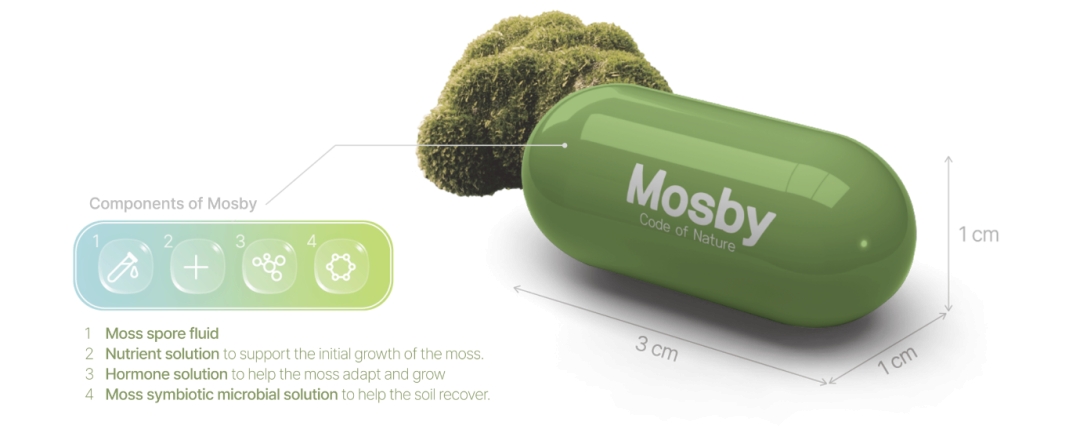Code of Nature, a Korean startup leading moss-based restoration, has proven a life-supporting system that can sustain growth on the Moon. Using the resilience of moss, its Mosby technology now brings this vision back to Earth — restoring degraded soils and reviving barren ecosystems.

Figure 1. Moss of Hypnum plumaeforme, used in this study.[Source from Code of Nature]
1. Research Introduction: “Can Plants Grow on the Moon?”
For centuries, humanity has sought the answer to one profound question: “Can plants grow on the Moon?”
In 2022, a research team at the University of Florida conducted a groundbreaking study titled “Plants grown in Apollo lunar regolith present stress-associated transcriptomes.” The experiment revealed that when plants were cultivated in actual lunar soil, their root development was severely limited, and their cells exhibited intense stress responses. This finding demonstrated that lunar soil is fundamentally different from Earth’s, and that an entirely new approach to plant growth is required.
At that point, Code of Nature, a research team from Korea, turned its attention to moss.
Moss — a primitive plant that has existed on Earth for over 400 million years — can survive on bare rock without soil, retaining moisture and forming self-sustaining ecosystems with symbiotic microorganisms. Recognizing its ability to establish the foundation of life even in harsh environments, Code of Nature began exploring the potential of moss for future lunar ecosystem research.

Figure 1. Comparison of plant growth with and without moss and microbes. Control lacks moss, while the Moss treatment includes both moss and microorganisms.
(Source: [Park Jae-hong et al. (2025) Moss-derived microbiome improves crop growth in lunar and Martian soil simulants])
2. Core Findings: Moss–Microbe Symbiosis Revives Barren Soil
The study by Park Jae-hong et al. (2025) Moss-derived microbiome improves crop growth in lunar and Martian soil simulants proved that moss can promote plant growth on simulated lunar (LHS) and Martian (MGS) soils, revealing new potential for sustaining life beyond Earth.
Without moss, plants could not grow due to the coarse particles and low porosity of lunar soil. But when moss was introduced, it acted as an ecological buffer, creating a stable microenvironment where barley plants thrived — their stem length and biomass more than doubled.

Figure 2. Comparison of plant growth in Lunar Highlands Simulant (LHS-1) and Mars Global Simulant (MGS-1) with and without moss.
(Source: [Park Jae-hong et al. (2025) Moss-derived microbiome improves crop growth in lunar and Martian soil simulants])
The key lay in the microbes living within the moss. Two species, Pseudomonas monteilii and Bacillus cereus, isolated from Hypnum plumaeforme, decomposed phosphate, produced growth hormones (IAA), and supplied chelated iron, forming a mutual support system between moss, microbes, and plants.
The team also found that in the moss–microbe system, plant roots accumulated D-ribose and D-gluconate, essential for energy and tissue formation — effectively re-engineering barren soil chemistry to restart life activity.

Figure 3. Moss and microbes promote plant growth by altering metabolite profiles.
(Source: [Park Jae-hong et al. (2025) Moss-derived microbiome improves crop growth in lunar and Martian soil simulants])
Moss proved to be a living platform that enables microbes to breathe and plants to grow again, redefining extraterrestrial agriculture and offering new directions for Earth’s soil restoration.
3. From Lunar Experiments to Earthly Restoration: Code of Nature’s Application
The principles demonstrated in this study are now being translated into action through Code of Nature’s large-scale restoration initiatives. Leveraging the natural resilience of moss, Code of Nature developed Mosby, a moss-based bio-restoration technology that rejuvenates severely degraded soils.


Figure 4. Before (left) and after (right) restoration of the Gangneung wildfire area. (Source: Code of Nature)
Gangneung Wildfire Site (2024–) : In a 2-hectare area completely devastated by fire, the application of moss culture solutions increased soil organic matter threefold within six months, allowing vegetation to recover naturally.
Taean Reclaimed Wetlands (2022) : In saline and nutrient-poor soils once graded as “poor,” microbial activity and water retention improved dramatically, upgrading the soil to “good” condition. The moss–microbe complex played a critical role in stabilizing soil structure and restoring ecosystem balance.

Figure 5. Mosby (Source: Code of Nature)
By transforming barren land into living ecosystems, Mosby represents a scalable solution to the global soil degradation crisis. It functions as a bio-regenerative system, rebuilding soil health from the microbial level up, and enabling a circular model of ecological recovery. Through this technology, Code of Nature is building a foundation for a planet-wide soil restoration network— where resilience, biodiversity, and sustainability converge.
For more information, visit ‘Code of Nature’ at https://www.c-of-n.com/
References
Park Jae-hong et al. (2025) Moss-derived microbiome improves crop growth in lunar and Martian soil simulants.
#Moss #Moon #Mars #SoilRestoration #EcoFriendly #SustainableAgriculture #MossRecovery #EnvironmentalInnovation #NatureBasedSolutions #ClimateAction #CodeOfNature #LandDegradation #Agroecology
Ⓒ 2025. Code of Nature Corp. All Rights Reserved.
Media Contact
Company Name: Code of Nature
Contact Person: Jaehong Park
Email: Send Email
Country: South Korea
Website: https://www.c-of-n.com/





